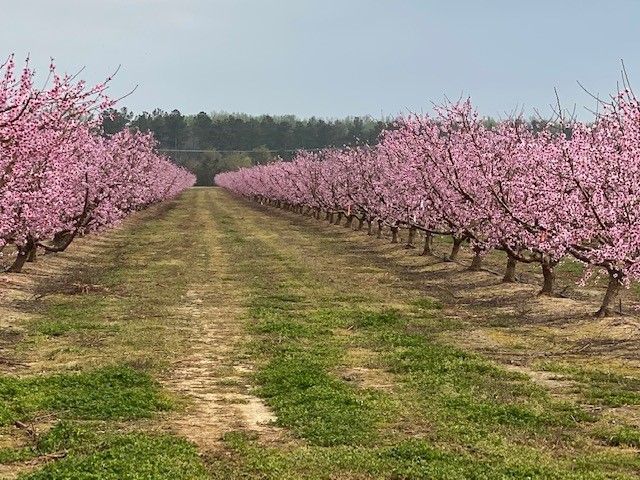By Clint Thompson
The lack of fungicide applications for peach diseases last season means growers should be mindful of sprays heading into next spring.

Once the freeze events in March wiped out most of Georgia’s crop, it also stopped many producers from applying their normal fungicide sprays. But they should be ready to combat potential disease buildup next spring, according to Phil Brannen, University of Georgia Cooperative Extension fruit disease specialist.
“I think the thing, especially for Georgia peach producers, the vast majority of them going into next year, is looking at disease levels probably being higher. The reason I say that is I know that even if they sprayed some this year for diseases, with the losses they incurred on peaches, a lot of the peaches did not get sprayed for disease. There were some peaches here and there, so I’m sure those developed disease, and therefore, you’re going to have more potential for scab and more potential for brown rot and all of that kind of stuff next year,” Brannen said.
“That’s not that dire. It just means they really need to be aware and be Johnny on the spot with their spray programs next spring; especially making sure they get out the early season sprays for scab. It will have built up this year. There will be more build-up of disease in orchards that were not sprayed, but it should not be that bad if they spray according to plan.”
Unseasonably warm temperatures in February advanced the peach trees to where blooms were set much earlier than normal. Trees were left susceptible to cold injury from a pair of freeze events in March. The result was little, if any, crop in most orchards.
“There were just very few orchards that had enough peaches in them this year to put a spray program in place. When you don’t put a spray program in place, the fungi in particular, with the scab and brown rot, it will build up. It’s a known thing that after you have a freeze like that, the following year, you’ll have a lot more potential for disease starting out,” Brannen said.









